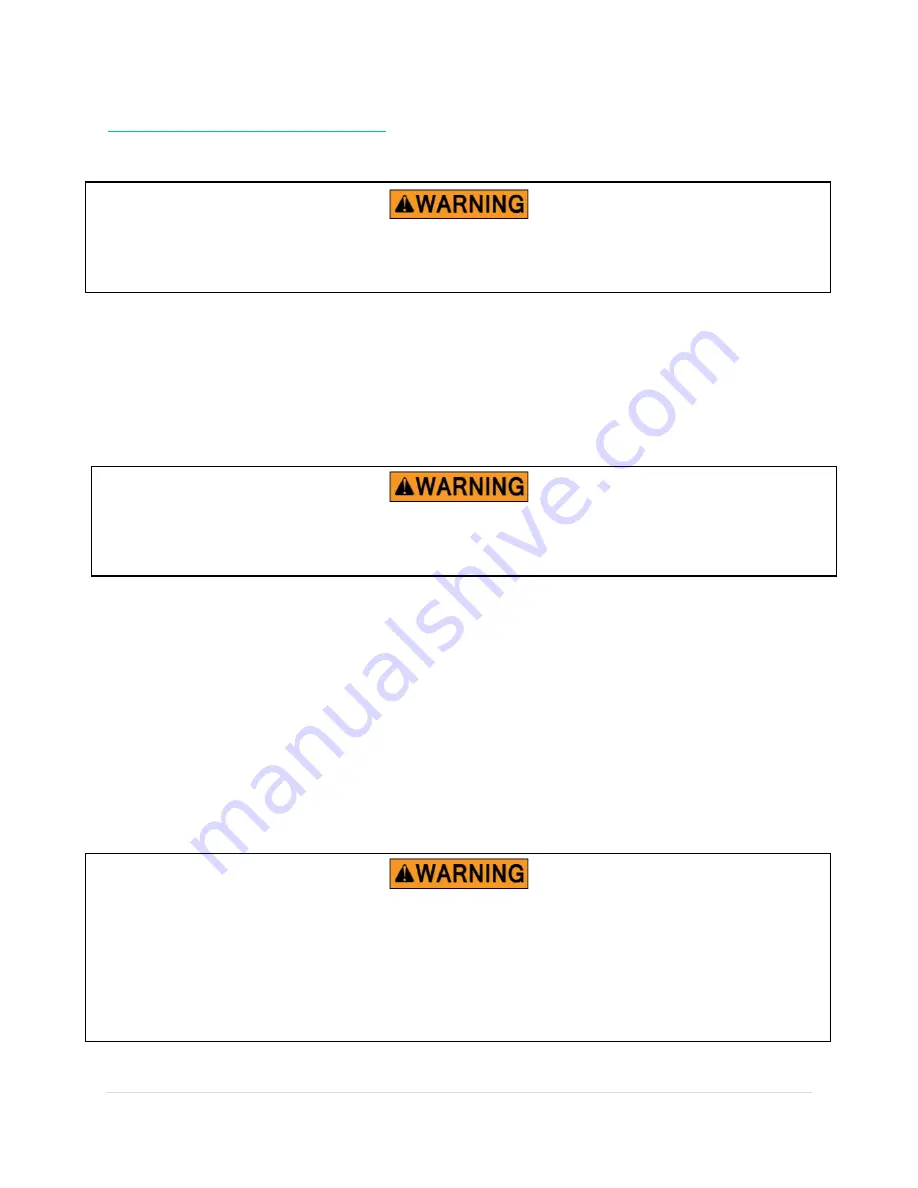
44
|
P a g e
PROPANE
SAFETY
(CONTINUED)
Propane
System
Maintenance
(Continued)
NEVER
ATTEMPT
TO
REPAIR
ANY
PROPANE
RELATED
COMPONENT.
ENSURE
THAT
ALL
ALARMS,
DETECTORS
AND
EXTINGUISHERS
ARE
IN
GOOD
WORKING
ORDER.
Filling
Your
Propane
Tanks
Your
Alliance
RV
uses
DOT
cylinders.
These
cylinders
can
be
removed
and
taken
to
a
propane
dealer
for
refilling.
A
propane
tank
can
only
be
filled
to
80%
of
their
total
capacity.
The
remaining
20%
is
for
expansion
that
takes
place
when
subjected
to
heat.
If
a
tank
is
filled
to
80%
when
it
is
cold
outside,
that
same
tank
may
be
at
90%
on
a
much
warmer
day.
Always
ensure
that
the
tank
is
filled
to
the
required
limit
only.
NEVER
FILL
A
PROPANE
TANK
OVER
80%
OF
ITS
CAPACITY.
AN
OVERFILLED
TANK
COULD
ALLOW
LIQUID
PROPANE
TO
ENTER
THE
SYSTEM
WHICH
IS
DESIGNED
FOR
VAPOR
AND
CREATE
A
VERY
HAZARDOUS
CONDITION.
Installing
Propane
Cylinders
Anytime
a
propane
tank
is
removed
for
servicing
or
filling
and
re
‐
installed
on
the
RV,
ensure
that
the
fittings
are
all
tight
and
the
main
shutoffs
on
the
LP
tanks
are
in
the
off
position
and
that
the
strap
that
secures
the
tank
is
in
place.
A
quick
visual
inspection
of
the
LP
system
should
be
performed
any
time
tanks
are
removed.
Cooking
with
Propane
Gas
In
an
RV
most
stovetops
and
ovens
run
on
propane.
A
properly
ventilated
RV
is
very
important
when
cooking.
Open
a
window
or
roof
vent
and
turn
your
range
hood
fan
on.
Never
use
your
stove
or
oven
for
space
heat
and
never
use
outdoor
fuel
‐
burning
equipment
inside
the
RV.
DO
NOT
ATTEMPT
TO
USE
WATER
TO
PUT
OUR
A
GREASE
FIRE.
WATER
CAN
SPREAD
SOME
TYPES
OF
FIRE
AN
ELECTROCUTION
IS
POSSIBLE
WITH
AN
ELECTRICAL
FIRE.
NEVER
ALLOW
GREASE
TO
COLLECT
ON
OR
AROUND
THE
STOVE.
CLEAN
SPILLS
UP
IMMEDIATELY.
IN
AN
RV,
THE
AMOUNT
OF
OXYGEN
SUPPLY
IS
LIMITED
DUE
TO
ITS
SIZE.
PROPER
VENTILATION
DURING
COOKING
WILL
HELP
AVOID
DANGEROUS
SITUATIONS.
































